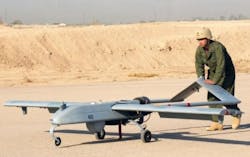IARPA releases formal solicitation for 3D displays to help geographical intelligence analysts
Current 3D viewing technologies, however, are inadequate to enable analysts enable to work interactively and collaboratively with 3D data in fast-paced operational settings for prolonged periods. Shortcomings involve the artificial rendering of depth and perspective, which often leads to fatigue and disorientation among analysts.
The SHO program will consider human factors to enable comfortable sustained viewing that is natural to the senses, IARPA officials say. The program also will develop powerful software to enable analysts to work naturally in 3D without the drawbacks of today's systems.
IARPA has set up a special Website for SHO program information at www.iarpa.gov/solicitations_sho.html. Companies interested in bidding should respond no later than 2 Sept. 2011. For questions or concerns, contact IARPA's Karl Roenigk by e-mail at [email protected], by fax at 301-851-7673, or by post at IARPA, Incisive Analysis Office, ATTN: IARPA-BAA-11-06, Office of the Director of National Intelligence, Intelligence Advanced Research Projects Activity, Washington, DC 20511.
More information is online at https://www.fbo.gov/notices/3387f1151a13aa8ec0d2bc39bf88335e.
